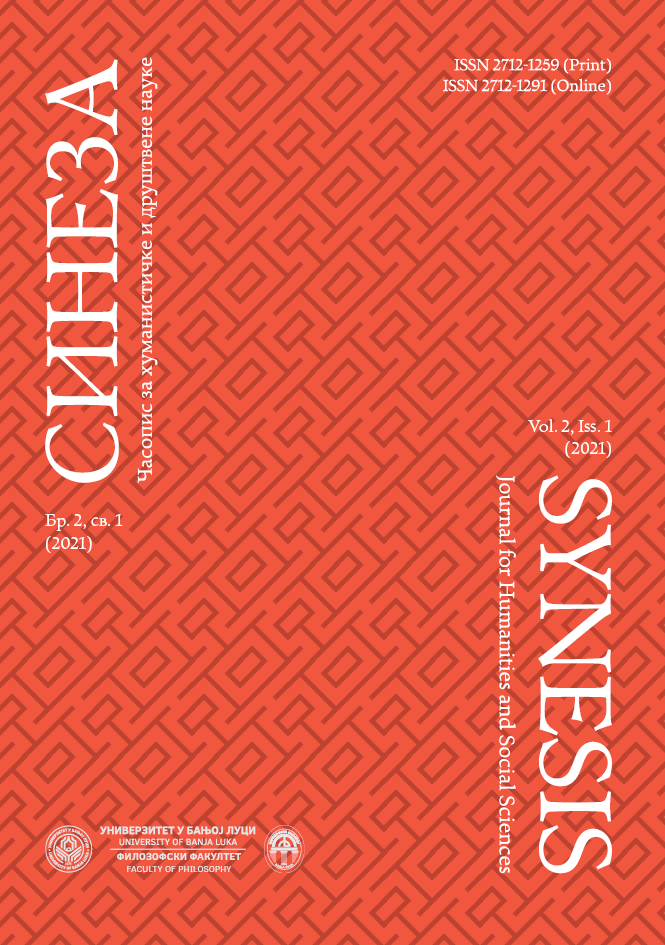Osobine ličnosti i karakteristični obrasci kriminalnog ponašanja počinitelja ubistva u Republici Srpskoj
Psychological characteristics and characteristic patterns of criminal behaviour of murderers in Republic of Srpska
Author(s): Sanja Radetić Lovrić, Suzana VujadinovićSubject(s): Social Sciences, Psychology, Social psychology and group interaction, Personality Psychology
Published by: Filozofski fakultet, Univerzitet u Banjoj Luci
Keywords: murderers; psychological characteristics; characteristic patterns of criminal behavior;
Summary/Abstract: The aim of this research was to explore differences among the murderers regarding the characteristic patterns of criminal behaviour and their relationship with psychological traits of murderers. The sample consisted of 74 convicts for the murder charge who, at the time of the research, served the sentence in the correctional facilities of the Republic of SrpskaThe study used reliable measuring instruments. Criminal patterns of behaviour were examined by a questionnaire created for the purposes of this research, which contained a set of questions about the crime committed, about a criminal career, and about criminal lifestyle. Personality traits were examined using HEXACO-PI-R (Ashton & Lee, 2009), which includes the dimensions: Honesty, Emotionality, Extraversion, Agreeableness, Conscientiousness, and Openness) and the Dark Triad D3-27 (Paulhus & Williams, 2002), which includes dimensions: Narcissism, Machiavellianism and Psychopathy.The obtained results indicate that there are differences among murderers according to the characteristic patterns of criminal behaviour. Results showed that the first group of murderers, in most cases, used fire arms, they killed in a residential area, did not plan the crime, and had no prior convictions or accomplices. The second group of murderers kill either in an open area, use cold steel as a murder weapon, have an accomplice, and they plan the crime. They have prior convictions, usually crimes against property and crimes against public order and safety. There were no differences between groups regarding psychological characteristics. The obtained data should be taken with a reserve, bearing in mind that all respondents are perpetrators of the crime of aggravated murder. However, the obtained data indicate that the perpetrators from the first cluster show higher values on the dimensions: Honesty, Emotionality, Extraversion and Collaboration, while the perpetrators in the second cluster showed higher values on the dimension Narcissism, that is, the tendency to manipulate other people, and lack of empathy. In the case of perpetrators who belong to the second type of murderers, the dimensions of Openness and Conscientiousness are also more pronounced. Machiavellianism is more common among perpetrators who kill with a motive of greed. Most of the respondents stated that they did not feel remorse after the murder, and the results show the existence of a statistically significant relationship between Psychopathy and the negative poles of the dimensions of Honesty and Emotionality. According to the results, all three dimensions from the Dark Triad scale can be predicted based on the dimensions from the Hexaco model.The general conclusion of the research indicates that personality traits in the sample of perpetrators proved to be good predictors of criminal behaviour, but that the crime of murder is a sociopathological phenomenon for which personality traits and socialization are equally important, that is, the interaction of all its factors. Results of this study can improve the existing body of knowledge on crime prevention and resocialization of murderers.
Journal: Sineza
- Issue Year: 2/2021
- Issue No: 1
- Page Range: 101-116
- Page Count: 16
- Language: Serbian

